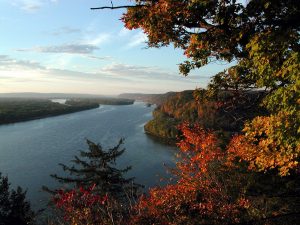With the holidays fast approaching, it’s wise to have some conversation starters on hand. Check out these Great River Road fun facts!
- From the headwaters in Lake Itasca, Minnesota to the grand finale in New Orleans, Louisiana, it would take 22 hours of non-stop driving to complete one half of the Great River Road.
- But, if you were a raindrop, it’d take you 90 days to travel the same distance!
- Minnesota has the longest portion of the Great River Road at 575 miles long.
- Kentucky is home to the smallest section of the Great River Road, just 63 miles.
- The Great River Road runs on both sides of the river, except between Hastings, Minnesota and the byway’s northern terminus.
- Great River Road town Hannibal, Missouri is the hometown of famed author Mark Twain.
- Two-thirds of Wisconsin’s Great River Road passes along or through protected natural areas.
- Some of the oak trees along Louisiana’s Great River Road are more than 300 years old!
- Illinois’s Great River Road is home to the confluence of three rivers – the Mississippi, Missouri and Illinois.
- River town Alton, Illinois has been named “One of the Most Haunted Small Towns in America” by the Travel Channel.
- Accolades come easy for the Great River Road. It’s been named, “Prettiest Drive in America,” one of the “U.S.A.’s Ten Best Motorcycle Roads,” one of the “1,000 Places to See in the United States & Canada Before You Die,” and “Best Drive in America.”








